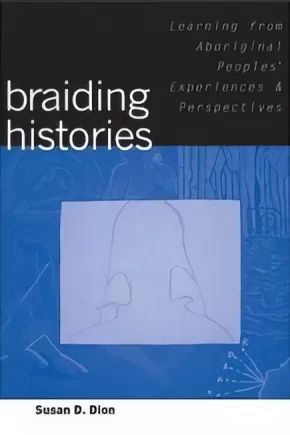Susan D. Dion
Susan Dion is an Aboriginal scholar (Lenape/Potawatami) who has been working in the field of education for 25 years. Her teaching and research focuses on understanding the relationship between Aboriginal and non-Aboriginal people in Canada. Susan Dion is cross appointed to the School of Woman Studies and the LaMarsh Centre For Research on Violence and Conflict Resolution.
Her research interests include social and political contexts of education; disrupting memories of post-invasion First Nations- Canadian Relations; resistance strategies of Aboriginal adolescent girls; Aboriginal Women and the policy of forced assimilation and violence prevention in Aboriginal communities.
Books (2)
Synopsis:
The Truth and Reconciliation Commission and Indigenous activism have made many non-Indigenous Canadians uncomfortably aware of how little they know about First Nations, Métis, and Inuit peoples. In Braided Learning, Susan Dion shares her approach to engaging with Indigenous histories and perspectives. Using the power of stories and artwork, Dion offers respectful ways to learn from and teach about challenging topics including settler-colonialism, treaties, the Indian Act, residential schools, and the Sixties Scoop. Informed by Indigenous pedagogy, Braided Learning draws on Indigenous knowledge to make sense of a difficult past, decode unjust conditions in the present, and work toward a more equitable future.
This book is a must-read for teachers and education students. It should also be read by students and practitioners in social work, child and youth counselling, policing, and nursing, or anyone seeking a foundational understanding of the histories of Indigenous peoples and of settler colonialism in Canada.
Reviews
“This book should be in every educator’s library. It serves as a model for educators to learn and teach about the history of Indigenous peoples and settler colonialism without fear or reservation. It is exactly what has been asked for over and over again.”— Tracey Laverty, First Nations, Inuit and Métis Education, Saskatoon Public Schools
"Braided Learning is a safe learning space for people at the start of their learning journey about Indigenous education and history. Each reader will take away the parts of the stories that are important to them, just like listeners do when we hear stories in the lodge from our elders. Nobody tells you what to do – you figure it out yourself with some subtle guidance." — Deb St. Amant, elder-in-residence, Faculty of Education, Queen’s University
"Understanding how educators can participate in reconciliation means understanding what stands in the way. Susan Dion understands both. Highly readable, engaging, and passionate, this book moves teachers from apprehension to action. Educators of all levels, read this book and take heed of Dion’s question: “So what are you going to do now?” — Amanda Gebhard, co-editor of White Benevolence: Racism and Colonial Violence in the Helping Professions
Educator Information
Table of Contents
Introduction: Indigenous Presence
1 Requisites for Reconciliation
2 Seeing Yourself in Relationship with Settler Colonialism
3 The Historical Timeline: Refusing Absence, Knowing Presence, and Being Indigenous
4 Learning from Contemporary Indigenous Artists
5 The Braiding Histories Stories / Co-written with Michael R. Dion
Conclusion: Wuleelham – Make Good Tracks
Glossary and Additional Resources: Making Connections, Extending Learning
Notes; Bibliography
Additional Information
288 pages | 6.00" x 9.00" | Paperback
Synopsis:
This book proposes a new pedagogy for addressing Aboriginal subject material, shifting the focus from an essentializing or "othering" exploration of the attributes of Aboriginal peoples to a focus on historical experiences that inform our understanding of contemporary relationships between Aboriginal and non-Aboriginal peoples.
Reflecting on the process of writing a series of stories, Dion takes up questions of (re)presenting the lived experiences of Aboriginal people in the service of pedagogy. Investigating what happened when the stories were taken up in history classrooms, she illustrates how our investments in particular identities structure how we hear and what we are "willing to know."
Braiding Histories illuminates the challenges of speaking/listening and writing/reading across cultural boundaries as an Aboriginal person to communicate Aboriginal experience through education. It will be useful to teachers and students of educational and Native studies and will appeal to readers seeking a better understanding of colonialism and Aboriginal--non-Aboriginal relations.
Suggested Grades: 10-12
ABPBC








